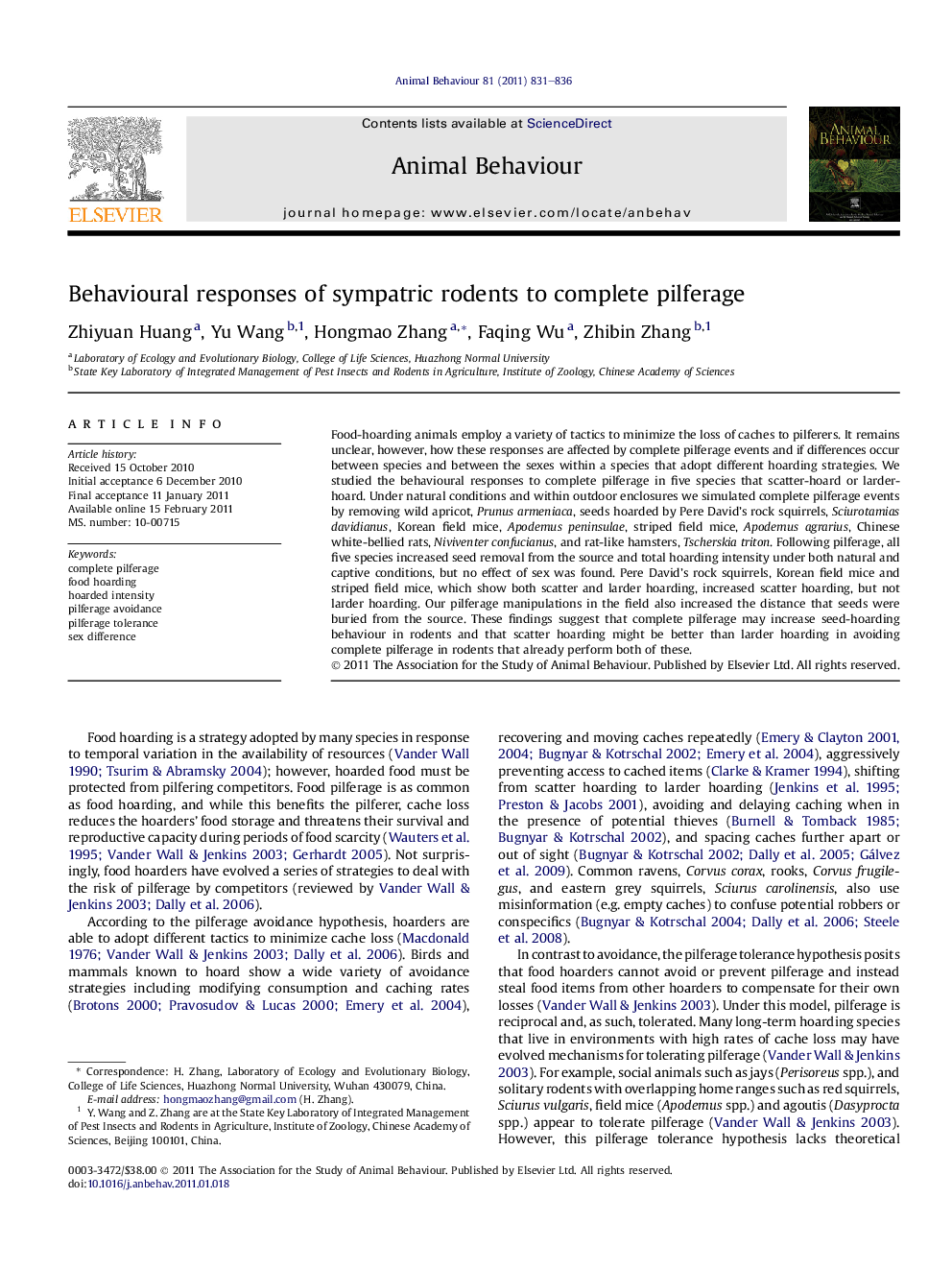| Article ID | Journal | Published Year | Pages | File Type |
|---|---|---|---|---|
| 2417092 | Animal Behaviour | 2011 | 6 Pages |
Food-hoarding animals employ a variety of tactics to minimize the loss of caches to pilferers. It remains unclear, however, how these responses are affected by complete pilferage events and if differences occur between species and between the sexes within a species that adopt different hoarding strategies. We studied the behavioural responses to complete pilferage in five species that scatter-hoard or larder-hoard. Under natural conditions and within outdoor enclosures we simulated complete pilferage events by removing wild apricot, Prunus armeniaca, seeds hoarded by Pere David’s rock squirrels, Sciurotamias davidianus, Korean field mice, Apodemus peninsulae, striped field mice, Apodemus agrarius, Chinese white-bellied rats, Niviventer confucianus, and rat-like hamsters, Tscherskia triton. Following pilferage, all five species increased seed removal from the source and total hoarding intensity under both natural and captive conditions, but no effect of sex was found. Pere David’s rock squirrels, Korean field mice and striped field mice, which show both scatter and larder hoarding, increased scatter hoarding, but not larder hoarding. Our pilferage manipulations in the field also increased the distance that seeds were buried from the source. These findings suggest that complete pilferage may increase seed-hoarding behaviour in rodents and that scatter hoarding might be better than larder hoarding in avoiding complete pilferage in rodents that already perform both of these.
